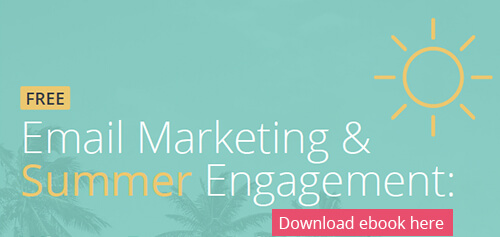
Expectations of Email Marketing and Summer Engagement
By Sophia Skinbjerg | sophia.skinbjerg@ungapped.com
Achieving any kind of successful email marketing and summer engagement is difficult. But it’s made even tougher during the summer when most of the population in Sweden, Denmark and Norway take vacation in July and August. Suddenly we find that our readership and engagement statistics drop. But does that mean all is lost? How can we as marketers, from small business or large enterprise, expect any kind of engagement when nobody is at the office?
Difficult but not impossible
Well, it can be more difficult than usual but it’s not impossible.
Great summer engagement comes from a combination of strategies that acknowledge the increased flexibility of subscribers, focusing on different or smaller segments, simplifying call-to-actions and content, giving some extra TLC, and taking the chance to get some valuable feedback about your own brand.
We’ve outlined these expectations and ways to flip the negatives into positives in a free downloadable ebook. You can keep reading for a previewed version below or download the full version with extra statistics and examples.
1. Expect (and accept) a drop – it’s natural
Though it might seem like the exact opposite of what this guide is for, it’s important to accept that July and August means vacation time. For some, this means switching off entirely from work. For others it means checking in sporadically. Naturally, this will affect your engagement levels and lower your statistics across the board.
The good news is that the summer period doesn’t make subscribers disappear entirely. A significant amount of people will still check (and click through) emails while on vacation which is why you shouldn’t lose hope just yet.
Read why the summer is a great time to revisit your email strategy.
2. People are out of office, not offline.
Most of us will try to be out of the office as much as we can to enjoy the warmer weather while it lasts. But this doesn’t mean we stop checking notifications – we simply do it on different devices and at different times than usual.
So to ensure that your subscribers can still open and read your mailing wherever they may be, your emails must be designed with mobile and tablet devices in mind. Your customer is more than likely to take a look at their inbox while on vacation but if they open a desktop-only view, they aren’t going to keep reading for very long (let alone click through).
3. Summer data isn’t useless, it just needs to be re-segmented
We’ve explained that lower numbers in your email marketing and summer engagement is quite natural over the months of July and August. But that doesn’t mean the data you’re still receiving is useless– it just needs to be grouped a little differently over the summer period. One way to do this is by identifying loyal subscribers versus ‘lapsed’ subscribers. Let’s explore this a little more.
In a given period (say, the past 6 months), take look at the total number of new subscribers versus the number of new subscribers who have actively engaged with one or more or your mailings. ‘Actively engaged’ could mean simply opening the mailing but try measuring more meaningful behavior like click-through rates and shares.
New to running email marketing campaigns? Read our pointers on what you should know.
By segmenting based on recent behavior, you now have two groups that can be targeted differently over the summer. Based on their past behavior you could that the loyal subscribers will re-engage with you after July and August. But for those ‘lapsed’ subscribers, it might be a good idea to create mailings that invite them back to your product or service with the added incentive of special discounts or deals that are only valid during the summer period.
4. Don’t expect people to do more than one thing at a time.
Vacation means relaxation.
This means people aren’t trying to juggle a hectic lifestyle like they would normally do. The key point here is that you can reflect this in your mailing design by only offering one call-to-action per mailing in order to get subscribers to do one thing per mailing. For example, reading a specific blog post, upselling a specific product or service, or liking your brand on Facebook.
By keeping the mailing content simple and restricted to one call-to-action, you can focus on achieving a very specific behavior whilst also reducing the chance of overwhelming your subscribers during a time of relaxation.
More email design tips /bhere > >
To keep reading, download your own copy of “Email Marketing and Summer Engagement”
